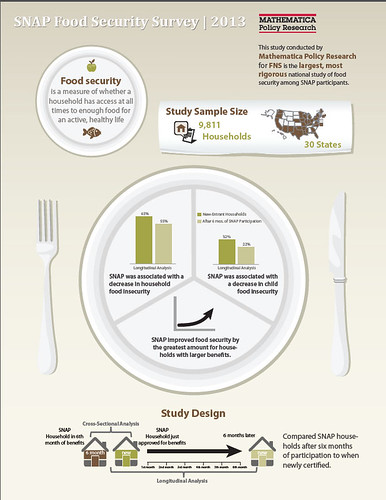
USDA’s Supplemental Nutrition Assistance Program (SNAP) is America’s first line of defense against hunger and new research released today makes it clear that SNAP improves food security, particularly among low-income children.
The study, funded by USDA’s Food and Nutrition Service and conducted by researchers at Mathematica Policy Research, found that participating in SNAP for about six months corresponded with a significant decrease in food insecurity. That effect was even more pronounced in households with children.
These results reiterate that in the short term, participating in SNAP can have a significant impact on the well being of recipients. SNAP helps ease the burden on hardworking low-income families so that they don’t have to choose between purchasing healthy food and paying for things like rent, utilities, transportation, school supplies, and other basic needs. And these are overwhelmingly families we are talking about—about half of all SNAP recipients are children, and households with children receive the vast majority of benefits.
And recently, a white paper by Pew Charitable Trusts and Robert Wood Johnson Foundation examined the long-term positive impacts of the improved food security that SNAP affords to recipients. Their analysis shows that increased food insecurity can result in increases in chronic diseases and medical expenses among low-income people—for example, an increase in food insecurity could result in as much as a $15 billion increase in medical costs associated with diabetes alone. Adults in food insecure households are at a higher risk for diabetes, high blood pressure and heart disease. Children in food-insecure households face higher risks of health and development problems.
This makes sense: a program that alleviates hunger and food insecurity in the short-term can also help to mitigate the long-term health and financial impacts of those conditions.
And while these are encouraging results, we know that health and food security are also about more than just access to food—which is why we are supporting robust public-private partnerships to encourage SNAP recipients to purchase more healthy foods with their benefits and improve access to healthy foods through farmers markets.
The economy continues to grow and recover, and we anticipate that program growth will slow as better paying jobs continue to be created and people move off the program. In the meantime, SNAP provides a vital lifeline for hardworking American families to get the nutrition they need and ensures a brighter, healthier future.
Read more about the study on Mathematica’s blog.
